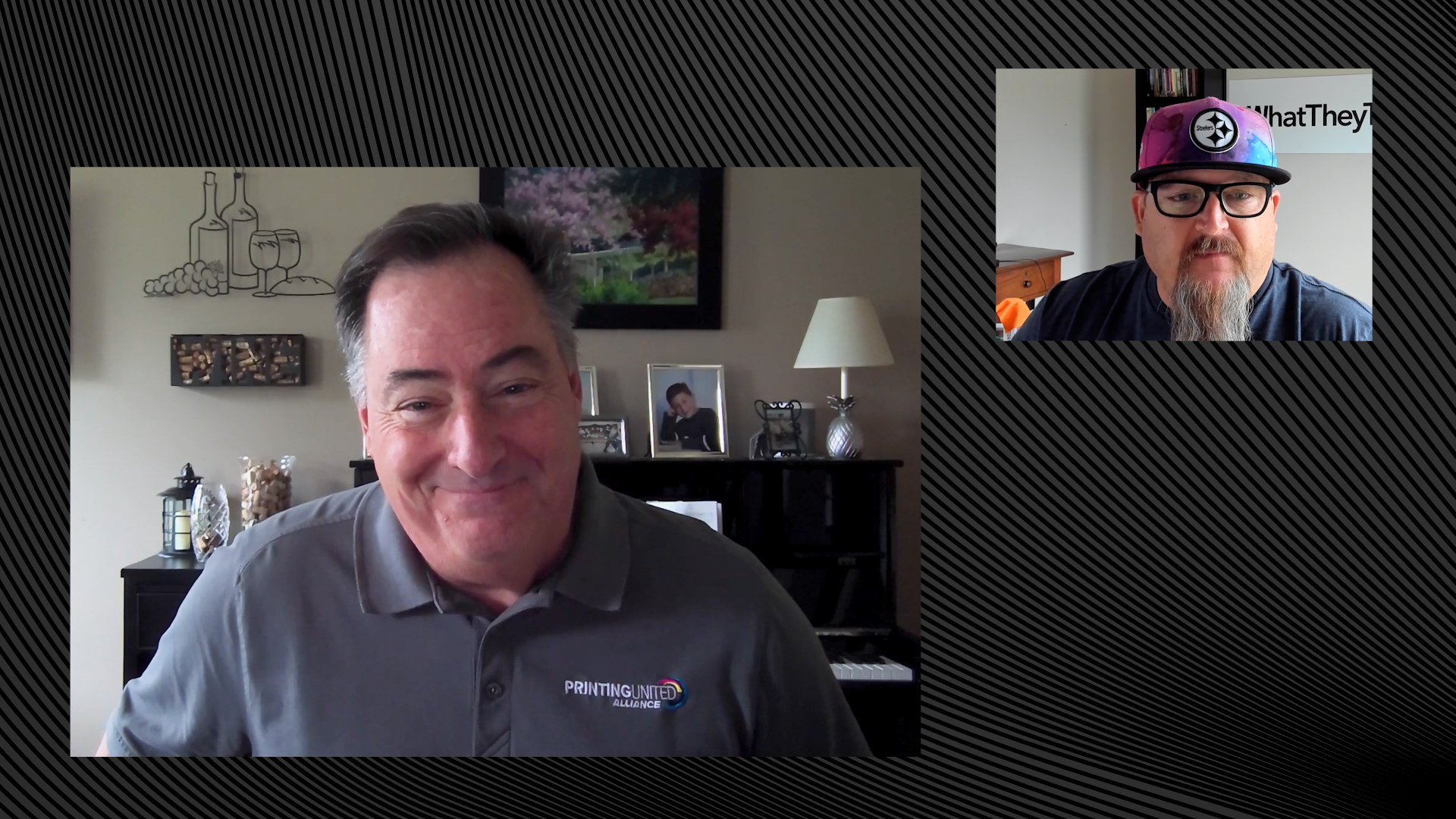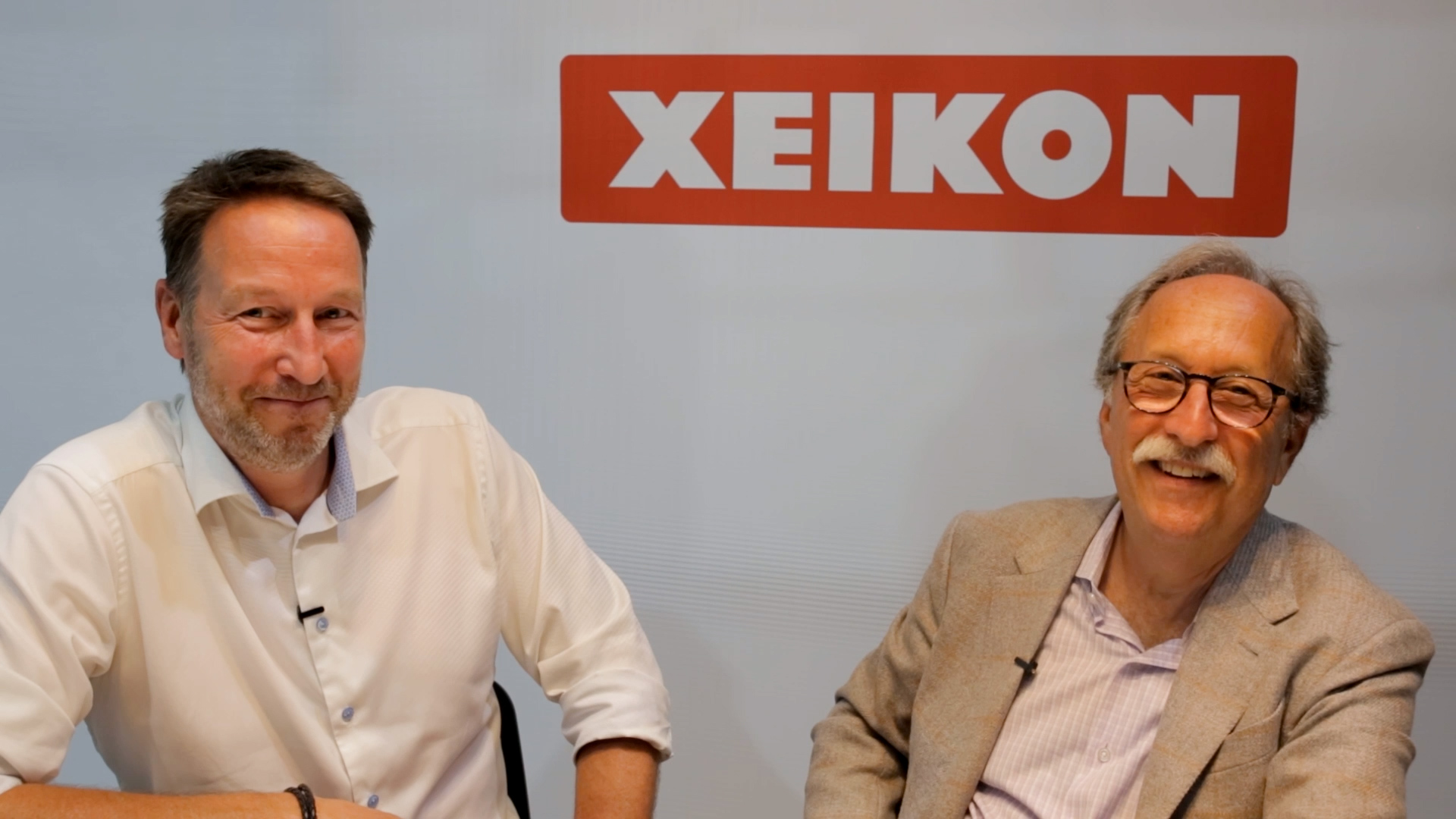Commentary & Analysis
Displaying 5601-5700 of thousands of articles
Insight You Need. Analysis You Trust.
Get the trusted insights you need to understand our evolving industry and emerging trends. Become a Premium Member.
Print 09: Litho, Litho Everywhere
To state the more or less obvious: Print 09 is an offset litho show. The rise of digital presses and a decline in the number of offset presses seen at the last three Graph Expos may have lowered the profile of conventional printing at the Graphic Arts Show Company (GASC) events somewhat, but it’s plain to see that the traditional ink-on-paper process is back in full force this year.
At Print 09, the Search for A New Beginning Is On
Bernhard Schreier has seen five economic crises since he joined Heidelberger Druckmaschinen AG in 1975, the first of them being the one brought on by the oil embargo that threw businesses around the world into a tailspin. He also recalls the stock market meltdown that the printing industry was only starting to recover from on September 11, 2001, before the awful events of that day threw it and the rest of the U.S. economy back into a state of shock.
It's almost time for PRINT 09
The last minute work is in effect. They are cleaning the booths and will roll the carpet along the aisles. Today a few thousand people will show us whether the recession is over -- at least for the printing industry. This is the first PRINT where the number of digital printers outnumbers the number of offset litho presses. It is the first print where inkjet is a dominant product being exhibited. It is the first PRINT where you can say that it is mostly digital in terms of workflow.
PRINT 09: What Tomorrow Brings
Tomorrow, PRINT 09 opens its doors at Chicago’s McCormick Place. An estimated 650 exhibitors and over 100,000 printers, publishers, typographers, converters, bindery and finishing specialists, prepress managers, desktop and electronic publishers, service bureaus, graphic designers, art directors, advertising professionals, publication designers, catalogue designers, and direct mail specialists are expected to come through the doors between September 11 and September 16. In an industry that is facing tremendous economic uncertainty, attendees are coming to PRINT 09 for more than participation in a tradeshow. They are seeking to discover what tomorrow will really bring.
A Message to Printers Attending Print 09
When we go to a major print show the major attraction for all of us is to spend time looking at the latest presses, whether these are conventional or digital. We love to see all the latest innovations on these presses to see just how efficient they are. Most printers yearn after the latest presses thinking how much they will improve their businesses with the productivity they can offer. I have to say that I too love looking at presses and there will be many new innovations in this area at Print’09 to attract the attention of visitors. There will be presses, some being shown for the first time in the US, in sizes from B3 through to VLF in the offset area. In digital many people will focus on the high-speed continuous feed presses, although two of the major suppliers, HP and Kodak, will not be showing these at the show.
A Few Hot Items to Check Out at Print 09
Print 09 is just around the corner, and exhibitors have been busy ensuring that they have the right mix of information, hardware, software, education and entertainment to make this an outstanding show.
Printing: where are we?
Draw a circle. Let us say that it represents all reproduction on paper and plastic substrates in the United States over one year. This includes printing on all devices, as well as copying. Now take a slice that represents about one quarter out. That is the volume of print that we lost to electronic alternatives: websites, PDF files, e-mail, etc. What is left is more or less the printing industry.
Implementing Lean Manufacturing into Newspaper Production Operations - Part A
Newspapers are a dynamic medium, and the development of newspaper products is continuously changing. The paper has been around for centuries, but today there are a myriad of alternatives for reading the news. In addition to changes in circulation, demand for quality, volume, price, and distribution has changed considerably. The newspaper as a medium must change to meet these demands.
The Workings of InnerWorkings: Still Positive in a Down Turn
We’re tracking on the ups and downs of public companies in the graphic arts industry to bring you regular profiles. Based on SEC filings, including quarterly and annual reports and proxy filings, as well as transcripts of earnings calls, we summarize key financial and business issues.
Equipment Leases: Beware of Possible Pitfalls
Equipment leasing offers many printing companies an affordable way to add today’s most requested capabilities to their service offerings, especially in today’s tight lending market. In addition to computers—far and away the equipment leased most frequently by businesses—printers are leasing such industry-specific equipment as presses, copiers, binders/cutters, colorimeters, and graphic cameras.
Print's New Entrepreneurial Opportunities
Last week, I discussed how the common wisdom benefits of print as enumerated as recently as 2006 and 2007, were crumbling because of several trends: l consumer Internet volume had passed business volume in 2008
A Sea Change in Printing Trade Shows?
Print 09 is shaping up to be an interesting show. The Graphic Arts Show Company has continued to shift the shape of the show based on changing industry dynamics. In case you haven’t visited the show site, it is being billed as myPRINT and has lots of great features to help attendees plan their show experience and navigate once they get there. The show company is even doing a cross-media campaign with mailings linked to personalized URLs. Visitors to the show site can customize their experience there as well, by specifying the type of visitor they are: commercial printer, in-plant printer, print buyer, etc., and being presented with the most relevant content.
Assessing job candidates beyond the technical skills
The goal of effective hiring is to maximize the return from your organization's human-capital investment and minimize the corresponding financial risks. And as a hiring manager, your task is to assess the potential of job candidates accordingly--in an astute, consistent, legal, fair, and humane manner. Of course, your first task is to determine how closely their technical (or “hard") skills relate to the technical requirements of the specific position you’re trying to fill. But the purpose of this article is to go beyond this initial assessment to discuss the more subtle aspects of candidate assessment and how to go about them.
A Focused Approach… It’s Essential to Growth!
In today’s challenging economy, a laser focus on the right target market is critical to success. These days, it takes more than leading-edge print and software technologies, products, or competitive prices to be successful. Companies need a focused business-to business-marketing strategy—a way to identify, segment, quantify, locate, and target their most important business-to-business customers and marketing prospects to reach their present and future goals.
In the Current and Emerging Era of Rampant Connectivity and Social Media, Where Do Print's Benefits Stand Now?
Back in 2006 I discussed the benefits of print as they stood at that time. Just think: last year, consumer Internet traffic surpassed business traffic; the iPhone was introduced in mid-2007 and the Kindle in 2008; social media did not exist for all practical purposes, and it now is 10 minutes of every hour consumers spend online. Add the downdraft of a worldwide recession, and you have listed every reason for every B2C, B2B, and all other organizations to re-cast their media plans and expectations. Here is where those some of those benefits now stand and the impact these forces have had on them; this is followed by some discussion about what this all means to our industry:
2009’s Top Ten Technologies for Survival
Each year for the last several years, I have taken the time to speak with Bill Lamparter, who coordinates Executive Outlook and the Must See ‘ems program for Graph Expo/Print, to learn more about what went into the Must See ‘ems panel decision about top technologies. This year was no exception.
Selling Mailing Services: Getting Started
A company's general intangibles have a very tangible impact on a company's valuation. Intangibles that are perceived as attractive can greatly enhance a company's value while negative or negligible intangibles can drag it down. To safeguard the worth of their businesses, NAPL Senior Vice President and Consultant John Hyde believes that graphic communications company owners should take proactive steps to protect their intangibles.
I Told You This Was Going to Happen
The news reports were so predictable. “The government's index of prices paid by consumers was unchanged in July from the previous month, but the closely watched inflation gauge recorded its largest over-the-year decline in 59 years.” That's the way CNN said it on Friday.
Printing Can be a Growth Market
Did you know that there is a company whose business is printing, that calls itself a printing company, but which is categorized as a high-growth organization by many organizations like Deloitte and Inc Magazine. The company is Mimeo.com and Deloitte identified it as the 25th fastest growing technology company in the New York region in 2007. Admittedly in 2006 it held the 10th spot on this list so its growth is slowing slightly. However since few companies that call themselves printers ever make it on any list for rapid growth there must be something special about Mimeo. Also very few printing companies have a list of investors including venture capital, private equity funds and innovate leaders in high technology.
Prologue to PRINT
The PRINT 09 event is only a few weeks away. A lot of printers are asking if it will be worth a trip. Yes, it will. They should publish Bill Lamparter’s Must-see’um and Worth-a-look lists in advance so youknow what to expect. I think there will also be a few surprises.
Books On Demand: The Book Publisher’s Dilemma, The Printer’s Dilemma and Opportunity
Not long ago, futurists believed that we would all be reading our books electronically by now—either on a computer screen or on a handheld electronic book. While I have yet to invest in a Kindle, quite a few of my favorite books are available in one electronic form or another. Even today, though, the reality is that I would rather curl up with the processed corpse of a tree than look at one more display screen.
TransPromo: A B2B Twist
Yesterday, InfoPrint Solutions and Sinclair Oil announced a TransPromo partnership that has a slightly different twist than the programs we normally hear about. Most of the TransPromo case studies tend to focus on business-to-consumer applications: Companies who place marketing or educational messages on statements, invoices, notifications and other consumer (customer) communications, reducing costs and often converting these mundane documents from a cost center into revenue generators.
Hyping a Recovery Doesn't Help Anyone, Until You Actually Have One
There is such a desire for good economic news that the press and others plant the good news at the top of the story and then hide the details in plain sight in paragraph 3, where they know no one will find it.
Ink Optimization Made Easy
At the recent IPA Technical Conference, Chromaticity introduced an ink optimization solution that, according to the company, reinvents the way color separations are produced, a process that has remained relatively unchanged for decades. WhatTheyThink spoke to Ian MacKenzie, Chromaticity’s Vice President of Marketing, to get more detail about this bold statement and what it might mean to the industry.
It’s About the Conversation… Not the Campaign
Over the past five years, my columns have espoused the value of variable data and integrated campaign management. While I continue to be a firm believer in relevant messaging and cross-media communications, I am quickly learning that in today’s wired and social media world, the market has taken yet another turn. Marketers are focusing on the importance of social media, and they will start seeking partners that go beyond integrated marketing campaign management. These marketers are hoping to tap into the conversations that are taking place via social networks as they move from a monologue to a true dialogue with customers. As we move into 2010, the rise of social media will require solutions providers to deliver and support a new concept: Integrated multi-channel conversation management™.
Selling Mailing Services: Getting Started
If you have decided to add mailing and/or fulfillment services to your offerings, remember that you will not be alone in this dynamic market. Mailing and fulfillment service providers have been around for years, some producing the same types of work they always have, while others recognize the changes wrought by the digital age. Your closest competitors will be:
Doctor, When Will I Feel Better?
As far as excitement goes for economy watchers, the first full week of any month is as good as it gets. That's what dull lives we economists lead.
Kodak – Completing the Digital Printing Picture
In the previous article on the Kodak event in Dayton I concentrated on the Kodak Stream continuous inkjet technology and the new Kodak Prosper Press platform. At this event Kodak also spent time on covering the Kodak Versamark VL series continuous feed inkjet color presses and the Kodak Nexpress SE and Digimaster EX300 sheet fed digital presses.
Kodak – On Stream to Prosper?
Following the drupa event last year the major question that was being asked was what impact the new continuous feed color inkjet presses would have on the offset printing market. The vendors of these new presses took different positions in the areas of the market where they felt their presses were most appropriate. Most of them certainly saw their presses impacting in certain areas of the offset market where moderate quality on uncoated paper was a requirement, for example for newspapers and books.
It's About Time We Got Smart About Chaos
On August 3, Advertising Age columnist Bob Garfield's book, Chaos Scenario, will be released. The content has been previewed for a quite a while, and I cited it a few years back. Since the time of his first column about it, titled “A Look at the Marketing Industry's Coming Disaster,” much of what he projected has come to pass.
Beyond Web-to-Print, Drew Swankie of R and R Images
A year ago at drupa, HP announced an OEM relationship with Press-sense to bring to market HP’s SmartStream Director Web-to-fulfillment workflow solution, citing key benefits, components and features including:
Digital Packaging… The Time Has Come
Digital press technology for packaging printing and graphics has been around for more than a decade, but momentum is currently building behind end-user investments and hardware developments by technology providers. In today’s market, it is clear that digital package printing represents a recession-proof and profitable market opportunity. With today’s available technologies, the emergence of inkjet, and the needs of brand owners, short run digital technology is truly poised to take off.
The Next Industry Changing Technology?
Occasionally there are developments within this industry, often referred to as disruptive technology, that have the potential for fundamentally changing the market. The arrival of thermally imaged non-ablative CtP plates that came to market in 1995 is an example of such a disruptive technology. I have just come across another such disruptive technology that could have a similar impact to that of thermal CtP in changing the industry.
Make a Decision—Today!
You may have heard pundits say that it doesn’t really matter what you do—just do something. The trick in the printing industry is, don’t try to do everything.
When Demand Rises, Prices Rise; When Demand Falls, Prices Fall
That's the basic law of economics when the supply of a good or service is constant. There's been some discussion of late about the scarcity of print workers and the need for many thousands of them. One of the clues as to whether or not there is true demand for or a shortage of workers is the change in wage levels that the marketplace offers. If wages are up, there is greater demand for workers; and if wages are down, there is obviously not. Wages are the prices set by the interaction of workers and employers in a marketplace for long-term work. Higher wages attract workers who had previously been outside the industry; lower wages inside one industry send discouraged workers elsewhere.
- Innovations in Inkjet for Textile Production – live webinar
- Buying Inkjet Part 1: Does This Printer Make Me Look Good?
- LabelExpo 2023: Launches and Trends – Part 2
- Driving profitability with cut-sheet inkjet
- Zero Trust Environments for Inkjet Printing
- Kevin Roman on the evolution of professional services needs
- LabelExpo 2023: Launches and Trends – Part 1
- Inkjet Gets into “Hard Core” Applications
© 2023 WhatTheyThink. All Rights Reserved.








